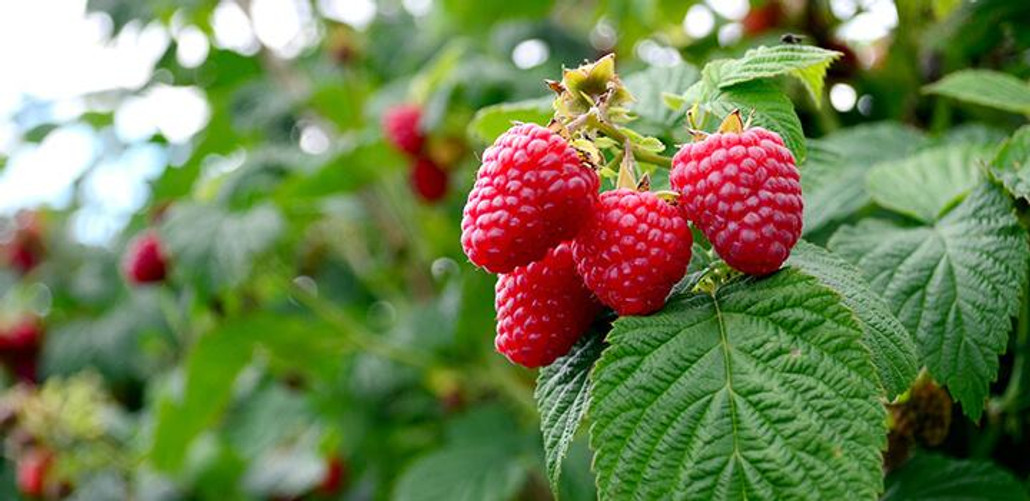
Berries
Posted by Grange Co-op on 31st Jan 2018

In this GrangeKnows article, we’ve selected four of the most popular fruits and vegetables commonly planted during the bareroot season. Bareroots are stocked in our stores and this article explains how to plant for success! In preparation for bareroots, we recommend amending the soil with
Aged Steer Manure to get started.
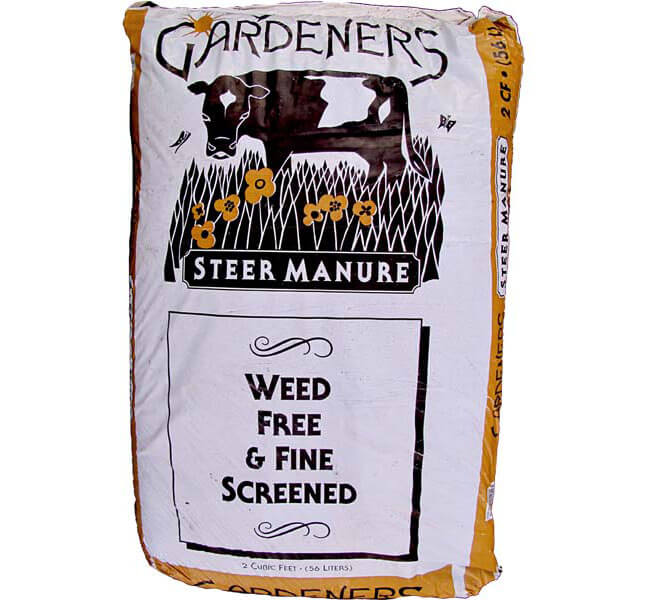
Strawberries
Strawberries are sturdy perennials and can be a unique ground cover if left on their own. Plant your strawberries early Spring. They reproduce by growing ‘runners,’ these are baby plants at their tips. The runners will root themselves nearby while remaining attached to the mother plant. Strawberries need at least eight hours of sunlight a day, and they prefer well-draining, sandy loam soil. Strawberries are prone to Verticillium Rot— a wilting disease common in tomatoes, potatoes, peppers, and eggplant—avoid planting strawberries near these plants. Once you have chosen a location, till the soil with one to two inches of
Aged Steer Manure, this will amend the soil. Dig holes large enough for the roots to spread out. 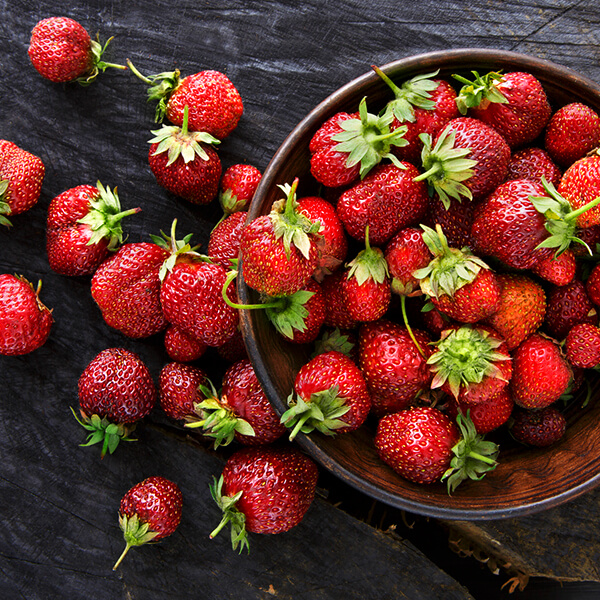 Because strawberries will produce runners, it is wise to space the plants at least 18 inches apart. When planting strawberries, it is important to leave the growing bud, or crown, exposed. If this part of the plant is buried, the strawberries will most likely succumb to rot. Cover the soil around your plant with straw or mulch. This will keep the fruits clean and allow the plant to sustain the correct amount of moisture. Generally, one to two inches of watering a week will suffice.
Because strawberries will produce runners, it is wise to space the plants at least 18 inches apart. When planting strawberries, it is important to leave the growing bud, or crown, exposed. If this part of the plant is buried, the strawberries will most likely succumb to rot. Cover the soil around your plant with straw or mulch. This will keep the fruits clean and allow the plant to sustain the correct amount of moisture. Generally, one to two inches of watering a week will suffice.
There are three different types of strawberries: June Bearing, which are the largest-sized strawberries and yield a single, large crop for only two to three weeks during the Summer. These varieties include Hood and Totem strawberries. Whereas the second type, Everbearing strawberries, produce two to three harvests throughout the Spring, Summer, and Fall. These are often considered the traditional strawberries: Seascape and Quinault. The third type of strawberry is a Day Neutral, which produces throughout the growing season, but in smaller quantities than the others. Hecker and Tristar berries are examples of this type of strawberry. Everbearing and Day Neutral generally do not produce runners to the extent of the June Bearing strawberry, and resultingly can be planted closer together.
Raspberries
Raspberries multiply, plant one cane this year, and next year a dozen or more will sprout near the same spot. They procreate by underground runners. Raspberries prefer full-sun and rich, well-draining soil. Often raised beds can help protect against rain rot, which can be common in the Pacific Northwest. Early Spring is the ideal time to plant—as soon as the soil can be worked—this allows the plant time to establish and may even produce a few berries during their first Summer!
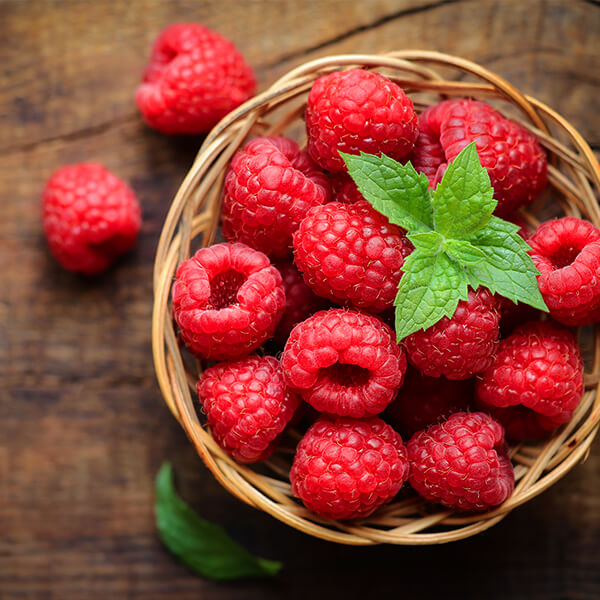 Prior to planting, soak roots in water for about an hour or two. Dig a hole about one foot deep and wide per plant. Keep the crown of the plant one to two inches above the ground. We recommend planting raspberries no closer than three feet. As stated, they will populate relatively quickly. Put a handful of Aged Steer Manure in each hole. Add some water, place the plant in the hole, make sure the roots are spread outward so they have room to grow and are not being crushed, and begin backfilling. When backfilling, leave a slight depression so rainwater can accumulate. Add more steer manure to give raspberries an additional boost. Finish by covering with straw or mulch. Surrounding raspberry plants with either straw or mulch will help maintain the appropriate amount of moisture and keep weeds at bay.
Prior to planting, soak roots in water for about an hour or two. Dig a hole about one foot deep and wide per plant. Keep the crown of the plant one to two inches above the ground. We recommend planting raspberries no closer than three feet. As stated, they will populate relatively quickly. Put a handful of Aged Steer Manure in each hole. Add some water, place the plant in the hole, make sure the roots are spread outward so they have room to grow and are not being crushed, and begin backfilling. When backfilling, leave a slight depression so rainwater can accumulate. Add more steer manure to give raspberries an additional boost. Finish by covering with straw or mulch. Surrounding raspberry plants with either straw or mulch will help maintain the appropriate amount of moisture and keep weeds at bay.
Raspberries should remain damp in the Summer and dry in the Winter. If you don’t have a drip system, a soaker hose can be used as well. Avoid using overhead watering methods as this may instigate fruit rot, a fungus that grows when canes are too crowded. Depending on the variety of raspberry you choose, a trellis or fence might be a wise option, so they have a support system as they begin to produce, often causing them to become top heavy.
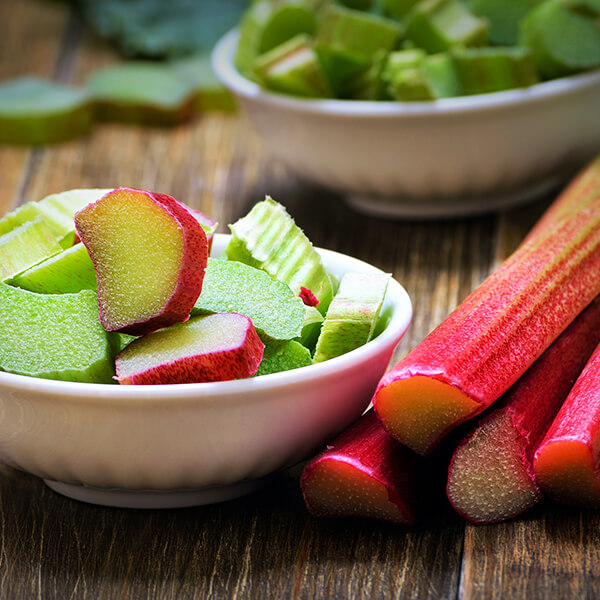
Rhubarb
Compared to the berries we’ve discussed, it is extremely important to find a location where rhubarb can produce long-term. When full grown, rhubarb can become quite large, generally four feet wide and tall, and they are not easily transplanted. Choose a full-sun location that will allow your plant to flourish for five to eight years, as this is the average yielding lifespan.
This plant also should be planted as soon as the soil can be worked, in early Spring. Dig a hole that is at least a foot deep and wide, break up the sides and bottom of the hole so the roots can extend and spread. Backfill using a combination of native soil and Aged Steer Manure. Before completely filling the hole, position your bare-root rhubarb so the crown is 2-3" below the soil surface. Lightly tamp the soil to remove any air pockets. Water regularly to keep the ground moist. To contain the moisture and discourage weeds from sprouting, apply straw or mulch around the plant.
Grapes
If pruned and upkept, grapes will produce fruit for 30 years or more; their roots extend extremely deep. Similar to rhubarb, choose wisely when deciding where to plant these abundant plants. Most grape varieties are self-fertile; however, we recommend asking one of our Grange Gardening experts to confirm the variety you are looking at purchasing does not require more than one plant for pollination.
Prior to planting your grapes choose a location with full sun, well-draining, preferably cultivated soil and minimal amounts of weeds and grass. We also recommend building a trellis or arbor to protect and manage the vines as they develop. It is best to build this trellis prior-to, or soon after, planting. As mentioned, grape roots can develop extensively.
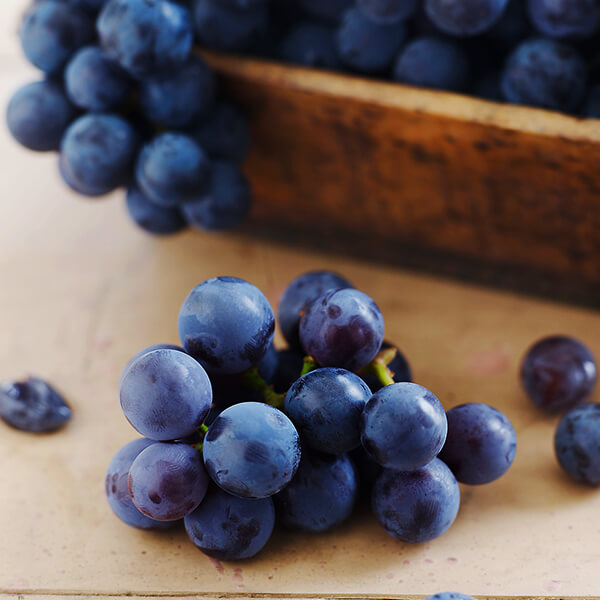 Prune the top back to two or three buds at planting time. Remove all damaged or broken canes, and trim any excessively long roots. Plant your grapes during the dormant season: this is early Spring after the chance of frost has passed. Soak the roots in water for 2-3 hours prior to planting. Ideally plant at least 6 ft. apart and 8-9 ft. between rows. Dig the planting hole wide enough to spread out the roots and deep enough to match the soil line previously made on the plant. Generally, this is 12 inches deep and 12 inches wide. Back fill the hole with equal parts of native soil and Aged Steer Manure. Fill the hole with water, allow the soil to settle, then finish backfilling with more soil and manure.
Prune the top back to two or three buds at planting time. Remove all damaged or broken canes, and trim any excessively long roots. Plant your grapes during the dormant season: this is early Spring after the chance of frost has passed. Soak the roots in water for 2-3 hours prior to planting. Ideally plant at least 6 ft. apart and 8-9 ft. between rows. Dig the planting hole wide enough to spread out the roots and deep enough to match the soil line previously made on the plant. Generally, this is 12 inches deep and 12 inches wide. Back fill the hole with equal parts of native soil and Aged Steer Manure. Fill the hole with water, allow the soil to settle, then finish backfilling with more soil and manure.
These newly planted grapes require an inch of rain weekly during their first growing season. During a dry season, watering every 7-10 days is necessary. Flowers can initiate on young canes and it’s quite possible to receive fruit even one year after planting. Unlike other berries we’ve discussed in this article, grapes do not need mulch or straw around the base of the vine. Grapevine roots like to stay warm and applying this type of covering will often cool the roots more than necessary. Additionally, this is why it is important to weed and keep grass at bay near the base of the plant, allowing the soil to heat up from direct sunlight in the Spring and maintain warmer temperatures, subsequently encouraging growth.
Bare-root plants are some of the best bargains in gardening and are equally successful after transplanting. There are no plastic pots to manufacture; subsequently, less waste is produced. We encourage you to jump on planting bareroots, there has never been a better time than now! Don’t hesitate to consult your local Grange Gardening expert regarding any questions or concerns you have pertaining to bare-roots.
